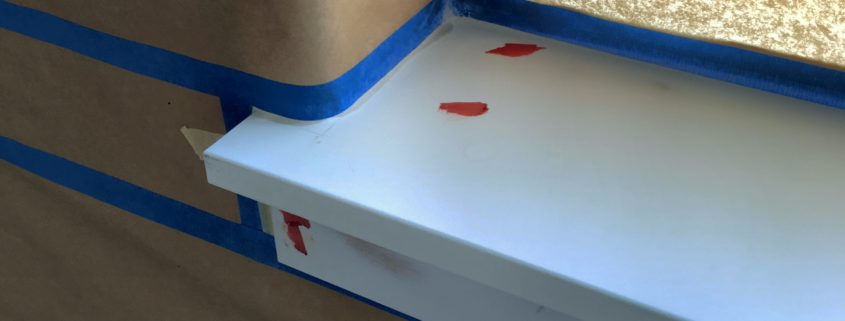How To Improve The Quality of Your Painting Service
If you look closely at the interior or exterior of a home you’ll most likely start to notice holes, and lots of them. Exterior painting contractors need to address these areas. You can provide the best paint job, but it could all be a waste if holes, gouges, scratches, etc. are not filled in. You may leave the customer very unsatisfied with your painting. This article will address these issues.

How are the holes made and why are they important?
There are numerous way that holes can be made on any exterior or interior trim and so on. Let’s first take a look at nail holes and why they are important to fill. Nail holes are often first made when the siding or trim is installed. Nails usually settle below the surface of siding or trim and an open hole is then left. Other holes can be created when the trim or or siding is damaged. This can happen for a large number of reasons such as furniture bumping into siding or trim, sharp objects scratching or gouging the surface, and many others. The reason addressing and fixing problem areas with holes is because of not only aesthetics but to protect your home from future damage. When moisture settles into these holes from sources like rain, water faucets dripping over trim, and water spills, it begins to break down the paint, which then leads to the wood breaking down. This is common especially in areas that are prone to collect moisture such as siding next to gutters and downspouts or siding near the bottom of the home. Signs to watch out for that indicate this happening is peeling paint. Once you start to see peeling paint get your interior or exterior painting contractors out and fix those issues!
How to Fill Holes
Now let’s get into how we address and fix holes. There are many different wood fillers, putty, and spackles and it can be difficult to choose the best one. Wood fillers not only come in different colors but also in viscosity (how soft the material is) and other differences. This just leads to greater confusion. This section explains how to narrow down on your choices.
- First, figure out if you need to fill holes on the interior or exterior of the home. The reason why this matters is because wood expands and contracts when temperatures change. Woodwork inside the house does not expand or contract much because the temperature inside the home is fairly constant. Wood on the exterior however does expand and contract. The exterior of the home gets hit with varying weather as the seasons change. In cold weather wood contracts and in hot weather the wood expands. Wood fillers vary because some fillers are able to expand and contract and some are not. The fillers that do are known as flexible.
- Second, figure out if the wood is going to be painted or stained. You need to know this because, although any color of filler can be painted to match the wood, staining the wood means you need to match the color of filler.
When you go to the store look for a filler that meets your criteria. Does it need to be flexible? Does it need to be color matched? Then read the labels on fillers to find what you are looking for. This is more important than looking for a brand. Interior and exterior painting contractors need to understand this because this affects the quality of their paint job.
Now that we have picked the type of wood filler, let’s get into how to actually fill the holes.
- First, make sure your interior and exterior painting contractors use a putty knife or your finger and fill the hole. You want to fill the hole above the surface and leave extra material because wood fillers can shrink as they dry, and to make sure you filled the hole completely.
- Second, you need to sand down the area. Make sure you sand enough to even out the surface, but not so much to take down the area below the surface level.
- Third, you want to prime those areas. The reason is because primer bonds to wood better than paint does. And paint bonds better to primer than to wood. Not priming the area leaves a risk of peeling paint in that area.
In Conclusion
Following these steps and understanding the importance if filling holes not only improves your quality as a painter, but also improves your credibility among customers. Make sure that your interior and exterior painting contractors are looking for signs of holes and peeling paint so that they can take the necessary measures to fix those problems.


